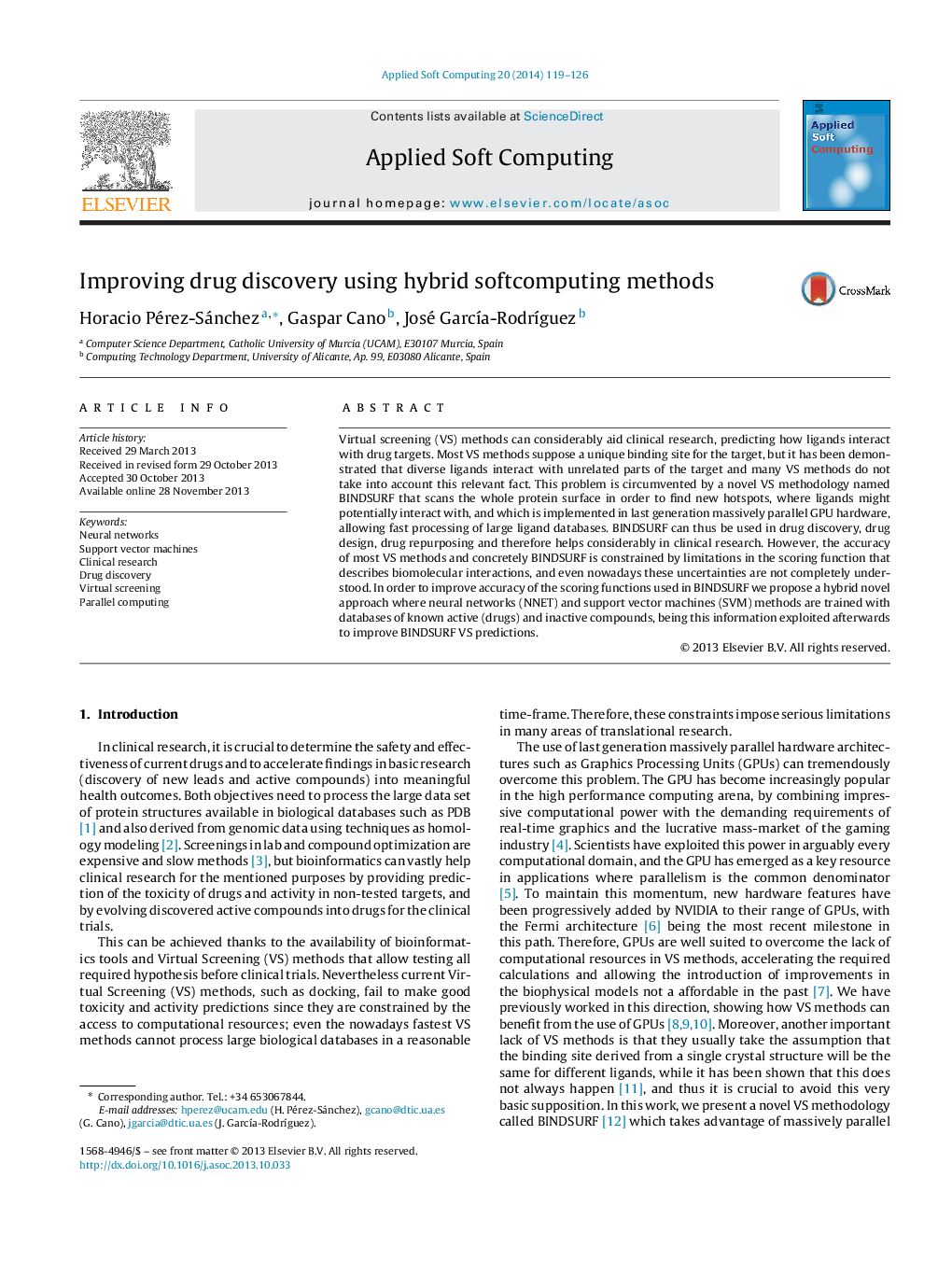| کد مقاله | کد نشریه | سال انتشار | مقاله انگلیسی | نسخه تمام متن |
|---|---|---|---|---|
| 495327 | 862823 | 2014 | 8 صفحه PDF | دانلود رایگان |
• We propose an hybrid softcomputing method to improve drug discovery.
• A detailed study using standard benchmarks has been carried out.
• Virtual Screening methods can be improved using neural networks and support vector machines.
Virtual screening (VS) methods can considerably aid clinical research, predicting how ligands interact with drug targets. Most VS methods suppose a unique binding site for the target, but it has been demonstrated that diverse ligands interact with unrelated parts of the target and many VS methods do not take into account this relevant fact. This problem is circumvented by a novel VS methodology named BINDSURF that scans the whole protein surface in order to find new hotspots, where ligands might potentially interact with, and which is implemented in last generation massively parallel GPU hardware, allowing fast processing of large ligand databases. BINDSURF can thus be used in drug discovery, drug design, drug repurposing and therefore helps considerably in clinical research. However, the accuracy of most VS methods and concretely BINDSURF is constrained by limitations in the scoring function that describes biomolecular interactions, and even nowadays these uncertainties are not completely understood. In order to improve accuracy of the scoring functions used in BINDSURF we propose a hybrid novel approach where neural networks (NNET) and support vector machines (SVM) methods are trained with databases of known active (drugs) and inactive compounds, being this information exploited afterwards to improve BINDSURF VS predictions.
Figure optionsDownload as PowerPoint slide
Journal: Applied Soft Computing - Volume 20, July 2014, Pages 119–126
